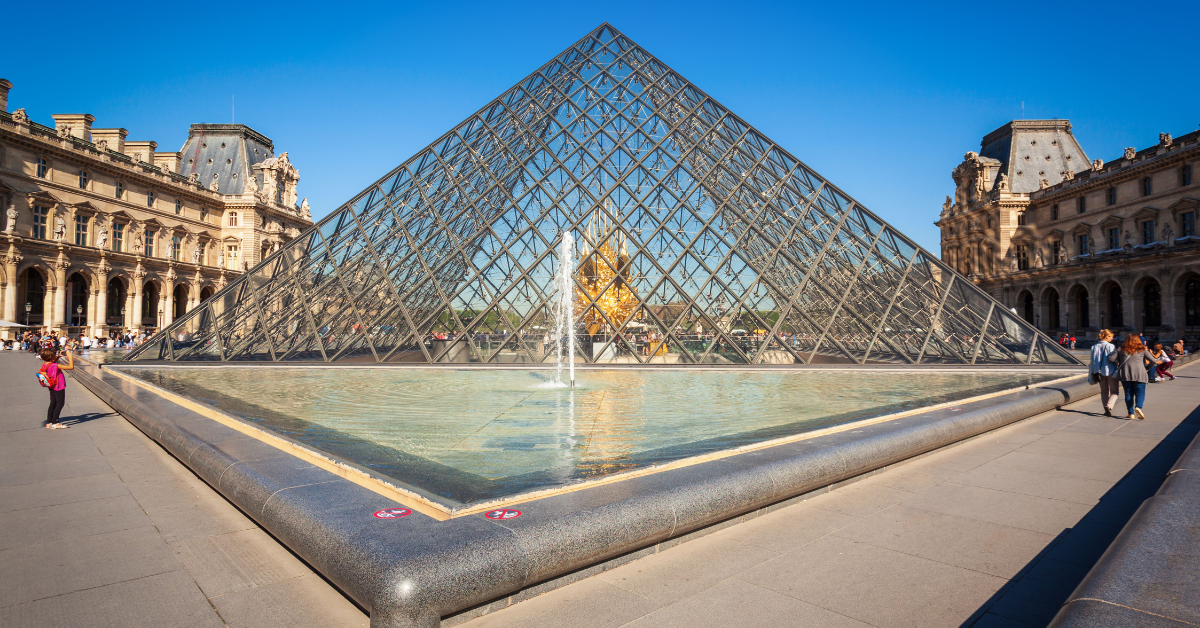When Japanese visitors step into the Louvre Museum, they are often overwhelmed by its immense scale and captivated by the contrast between Western grandeur and Japanese subtlety. These impressions are not merely personal feelings but reflect Japan’s deep-rooted cultural values, offering foreign audiences a new way of appreciating art.
First Impressions of the Louvre by Japanese Visitors
When Japanese tourists enter the Louvre, the first thing that overwhelms them is its immense scale. The entire palace is used as a museum, and thousands of artworks are displayed. Japanese museums often emphasize quietness and simplicity, with spaces carefully arranged to allow calm appreciation. By contrast, the Louvre’s sheer volume of exhibits and the bustling crowds feel like entering “a different world.”
Japanese culture places importance on harmony with nature, so visitors also notice the play of light and the vastness of the halls. For example, many remark on the glass pyramid’s sunlight, seeing it as a fusion of modernity and history.
Differences in First Impressions
| Aspect | Japanese Museums | Louvre Museum | Japanese Impression |
|---|---|---|---|
| Scale | Compact | One of the world’s largest | Overwhelming but refreshing |
| Atmosphere | Quiet and serene | Lively with tourists | More stimulating than calming |
| Architecture | Functional and simple | A palace itself | A non-daily experience |
| Visit time | About 2 hours | Half a day to a full day | Feels like a physical challenge |
Japanese Perceptions of the Mona Lisa
When standing before the Mona Lisa, Japanese visitors are often surprised by its small size. Having seen the painting countless times in textbooks and media, they imagine it to be massive. In reality, it measures only 77 cm by 53 cm. However, Japanese culture values “large meaning in small spaces,” as seen in hanging scrolls or short poetry. Thus, instead of disappointment, they perceive the painting as beauty condensed into a small frame.
Japanese visitors also tend to remain orderly in crowded conditions, waiting their turn calmly. This contrasts with tourists from other countries who may push forward for photos.
Impressions of Viewing the Mona Lisa
| Perspective | Japanese Visitors | Other Tourists |
|---|---|---|
| Size impression | Smaller than expected but full of condensed beauty | Disappointed by its smallness |
| Viewing style | Quiet observation | Lively gestures, photos |
| Viewing time | Short but focused | Longer, sometimes occupying space |
| Emotional expression | Internal reflection | Outward vocal or facial reactions |
Sculptures and Architectural Decorations: Experiencing “Foreign Splendor”
The Louvre’s marble sculptures and palace decorations symbolize strength and luxury to Japanese visitors. For instance, the “Winged Victory of Samothrace” or the “Venus de Milo” highlight muscular forms and dynamic poses, which are the opposite of Japanese Buddhist statues that emphasize serenity.
Japanese art frequently uses wood or lacquer, focusing on spirituality and calm expression. Western art, on the other hand, highlights physical beauty and vitality. By comparing the two, Japanese visitors sense the fundamental cultural differences.
Differences in Sculpture Styles
| Feature | Japanese Sculpture | Western Sculpture |
|---|---|---|
| Material | Wood, lacquer | Marble, bronze |
| Expression | Gentle, spiritual | Dynamic, muscular |
| Facial expression | Calm smile | Strong emotions |
| Visitor impression | Brings inner peace | Overwhelming vitality |
Art Genres that Capture Japanese Attention
Japanese visitors not only admire oil paintings but also show strong interest in ceramics, textiles, and furniture tied to daily life. For example, porcelain and courtly furniture displayed at the Louvre spark curiosity about how they were actually used. This reflects the Japanese view that “beauty exists in everyday life.”
Because of their attention to detail, Japanese visitors often spend more time on small artifacts than on grand religious paintings. This behavior contrasts with many foreign tourists who are drawn mainly to large masterpieces.
Art Genres That Attract Japanese Visitors
| Genre | Japanese Interest | Reason |
|---|---|---|
| Oil paintings | High interest | Historical context and technique |
| Ceramics | Very high | Connection to daily life |
| Textiles | Strong | Comparison with Japanese dyeing traditions |
| Furniture | Moderate to high | Appreciation of function and beauty combined |
The Meaning of Japanese Impressions
Japanese impressions go beyond tourism; they serve as a gateway to cross-cultural understanding. By experiencing the contrast between Japan’s quiet, subtle aesthetics and the West’s bold, dynamic expression, Japanese visitors rediscover their own cultural identity.
For foreign audiences, learning about Japanese reactions opens up new perspectives. Seeing the Mona Lisa as “small but condensed beauty,” or valuing daily-life objects as art, introduces unexpected ways of appreciating art. The Louvre thus becomes not only a museum but also a stage for cultural exchange through diverse interpretations.
Conclusion
Japanese visitors to the Louvre are astonished by its size yet interpret their experiences through their own aesthetics. They perceive the Mona Lisa’s smallness as condensed beauty, Western sculptures as symbols of vitality, and decorative objects as proof of the union between life and art. These impressions reflect Japanese values while offering foreign visitors fresh perspectives.
The Louvre is more than a gallery; it is a place where people from around the world exchange values. By understanding Japanese ways of seeing, international visitors can reexamine their own culture from new angles. This mutual awareness enriches the true essence of the Louvre experience.






